Scottish Budget 2022 to 2023: carbon assessment
Estimate of the consumption-based carbon emissions associated with planned budget expenditure.
2. High-level Carbon Assessment of 2022-23 Budget
2.1. Portfolio Expenditure and Associated Emissions
18. Total estimated emissions attributable to the 2022-23 Budget are 9.9 Mt CO2-equivalent. Table 2 shows overall spend and emissions by the individual portfolios and how these emissions arise. Emissions remain broadly proportional to spend, except for Rural Affairs and Islands, where emissions per unit of spend are slightly higher. Health and Social Care and Social Justice, Housing and Local Government are the largest Budget items, with the highest emissions.
19. Expenditure is shown net of income, in line with the Budget, and emissions are calculated on that basis.[3]
| Portfolio | Spend £m |
Estimated GHG emissions (thousands of tonnes of CO2 equivalent) |
|||
|---|---|---|---|---|---|
| Domestic | Total | ||||
| Direct | Indirect | Imported | |||
| Health and Social Care | £17,670 | 415.8 | 513.6 | 1,010.9 | 1,940.4 |
| Social Justice, Housing and Local Government | £15,964 | 1,017.9 | 588.0 | 1,590.7 | 3,196.6 |
| Finance and the Economy | £8,172 | 68.3 | 203.3 | 686.7 | 958.3 |
| Education and Skills | £4,531 | 108.3 | 110.4 | 358.1 | 576.9 |
| Justice and Veterans | £3,081 | 81.9 | 94.7 | 197.8 | 374.5 |
| Net Zero, Energy and Transport | £4,168 | 531.1 | 185.0 | 656.9 | 1,373.0 |
| Rural Affairs and Islands | £958 | 993.1 | 160.7 | 248.3 | 1,402.1 |
| Constitution, External Affairs and Culture | £354 | 5.9 | 17.1 | 23.9 | 46.9 |
| Deputy First Minister and Covid Recovery | £43 | 1.1 | 1.3 | 2.6 | 5.0 |
| Crown Office and Procurator Fiscal | £175 | 4.8 | 5.4 | 11.2 | 21.5 |
| Scottish Parliament and Audit Scotland | £124 | 3.5 | 3.4 | 9.7 | 16.7 |
| Total | £55,239 | 3,232.0 | 1,883.0 | 4,796.9 | 9,911.9 |
20. Direct emissions account for 33 per cent of the total; indirect emissions for a further 19 per cent. 48 per cent of emissions attributable to Budget expenditure are generated outside Scotland and are embedded in imported goods and services.
21. Figure 1 demonstrates graphically the results for individual portfolios and the split by type of emissions (direct/indirect), and also whether the emissions are domestic or imported. As the graph highlights, the emissions intensity (carbon emissions per pound of spend) of individual portfolios are broadly similar. The exception is Rural Affairs and Islands, where the emissions intensity of spend is higher.
22. A large part of this expenditure is linked to carbon-intensive production methods (carbon sequestration through forestry is not taken into account). Note that in the lower set of charts in Figure 1, the scales vary by portfolio.
Scottish Government Budget 2022-23
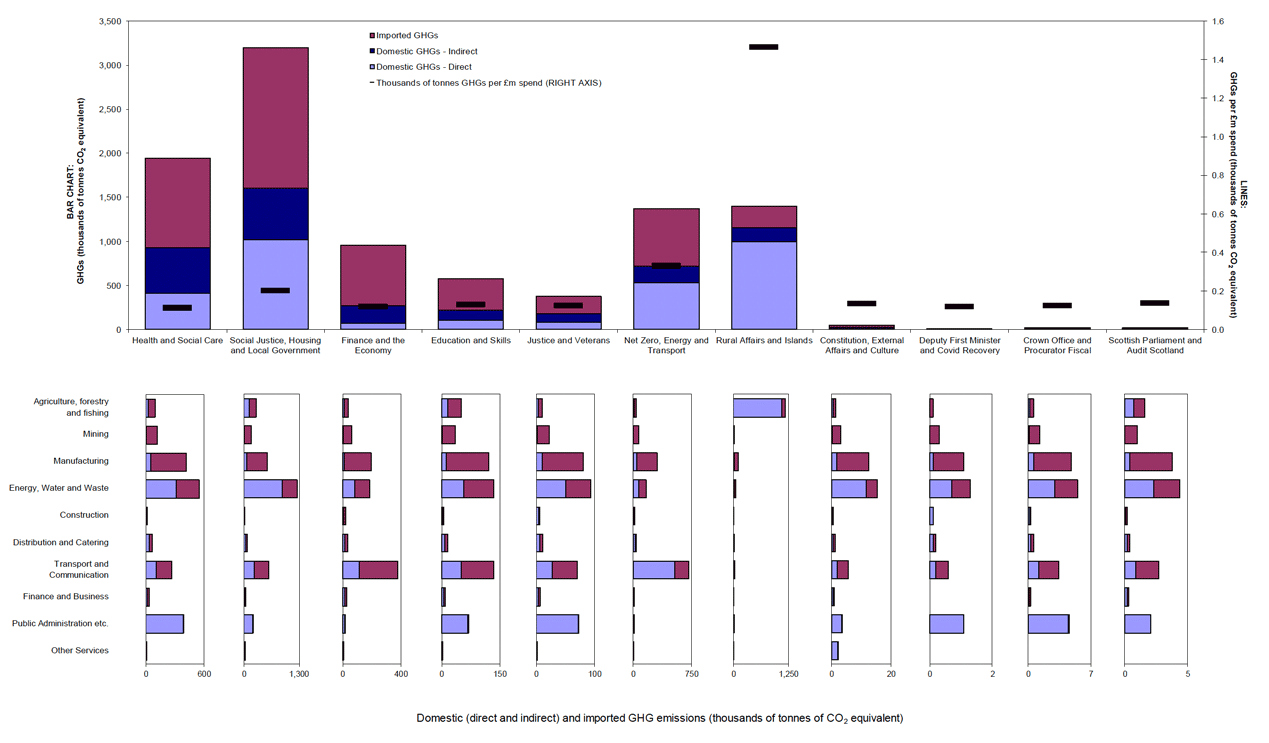
Domestic (direct and indirect) and imported GHG emissions (thousands of tonnes of CO2 equivalent)
2.2. Emissions by Industry Source
23. Total emissions broken down by industry are shown in Figure 2. Some 25 per cent of the Scottish Government's carbon footprint is caused by the use of Energy, Water and Waste, followed by Transport and Communication (22 per cent) and Manufacturing (18 per cent).
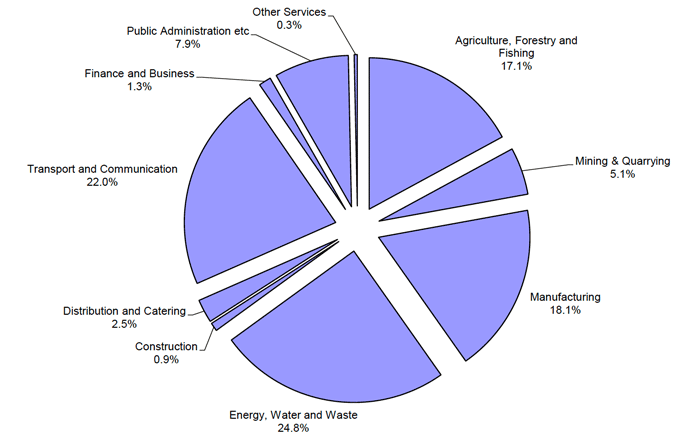
2.3. Domestic and Imported Emissions
24. In addition to direct and indirect domestic emissions, the assessment takes into account the emissions generated outside of Scotland in the production of imported goods purchased as a result of Government spending (e.g. food, machinery, IT equipment).
25. Figure 3 demonstrates that imported emissions make up around a half of emissions from Budget spend. There is however a difference between the sources of domestic and imported emissions. Expenditure on Energy, Water and Waste accounts for the largest share of domestic emissions, while expenditure on Manufacturing generates the largest share of imported emissions (followed by Transport and Communication).
Figure 3: Domestic and Imported Emissions - All portfolios
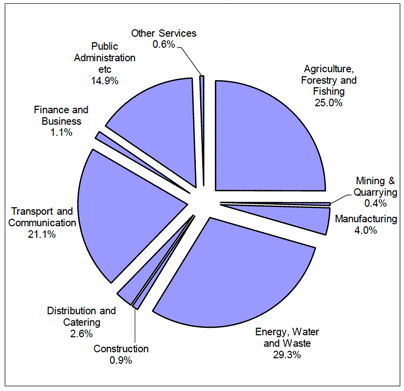
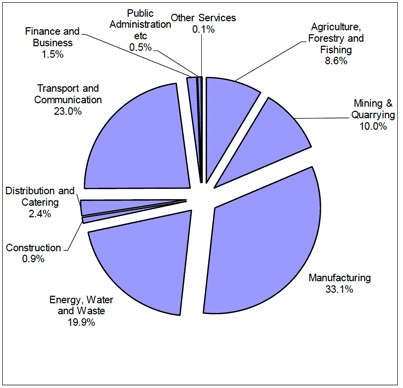
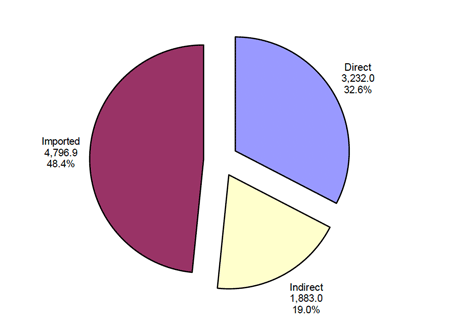
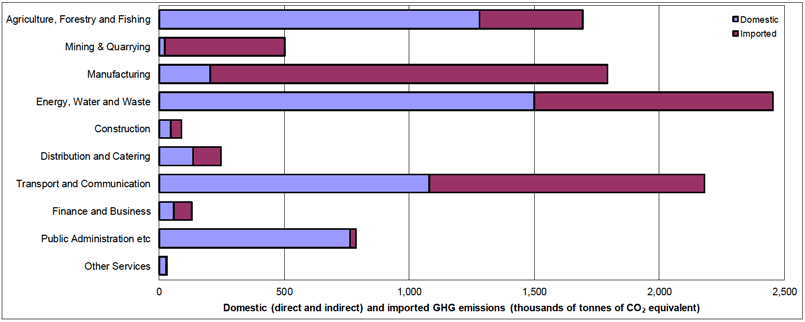
Contact
Email: sasha.maguire@gov.scot
There is a problem
Thanks for your feedback